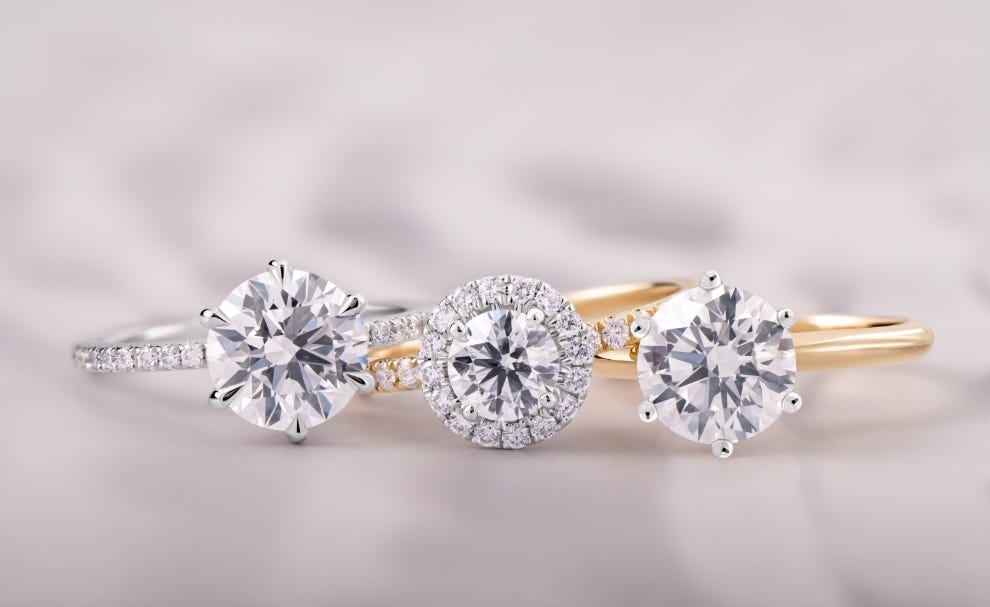Introduction to Lab Grown Diamonds and Cultures
lab grown diamonds and cultures have made significant steps as of late, challenging traditional view of diamonds and their cultural significance. These innovative gemstones offer an ethical and sustainable alternative to mined diamonds. This article investigates the crossing point of lab grown diamonds and various cultures, examining how these synthetic jewels are seen and integrated into cultural practices and traditions.
The Developing Popularity of Lab Grown Diamonds
Lab grown diamonds are gaining popularity overall because of their ethical and environmental advantages. Not at all like mined diamonds, which frequently accompany worries about unethical mining practices and environmental impact, lab grown diamonds are created in controlled conditions. This shift towards synthetic diamonds mirrors a developing cultural awareness and longing for sustainable practices in many social orders. As lab grown diamonds become more mainstream, their acceptance and integration into cultural traditions keep on advancing.
Cultural Impression of Lab Grown Diamonds
Cultural impression of lab grown diamonds vary across various social orders. In certain cultures, the allure of natural, mined diamonds remains solid, with traditional values and practices holding significant impact. However, in other cultures, the ethical and environmental advantages of lab grown diamonds are increasingly valued. For example, in cultures where environmental sustainability is fundamentally important, lab grown diamonds are much of the time embraced as a mindful choice. Understanding these cultural contrasts can give knowledge into how lab grown diamonds are gotten around the globe.
Lab Grown Diamonds in Wedding Traditions
Wedding traditions are well established in cultural practices, and the choice of engagement and wedding bands is much of the time an impression of these traditions. Lab grown diamonds are turning into a popular choice in many cultures for wedding and engagement rings. Their appeal lies in their ethical creation and affordability, making them an attractive choice for couples who focus on sustainability. In cultures where traditional diamond engagement rings are a standard, lab grown diamonds are gradually being accepted as a cutting edge and dependable alternative.
The Job of Lab Grown Diamonds in Contemporary Gems
Contemporary gems patterns are increasingly incorporating lab made diamonds, mirroring a broader cultural shift towards ethical and sustainable choices. Originators and gem specialists are embracing lab grown diamonds for their versatility and the ability to create extraordinary and innovative plans. This change in the gems business aligns with cultural developments towards sustainability and social obligation. As lab grown diamonds gain noticeable quality, they are turning into an image of present day values and changing attitudes towards extravagance and craftsmanship.
Cultural Impact of Ethical Adornments Choices
The ascent of lab grown diamonds is part of a larger pattern towards ethical and transparent practices in the gems business. This cultural shift mirrors a developing awareness of the social and environmental impact of consumer choices. Lab grown diamonds, with their diminished environmental impression and ethical creation techniques, align with the values of many contemporary cultures that focus on sustainability and social obligation. This cultural impact is obvious in the increasing demand for ethical gems and the adoption of lab grown diamonds in various cultural settings.
Lab Grown Diamonds and Global Markets
Lab grown diamonds are making their mark on global markets, impacting cultural insights and practices related to gemstones. Various districts have varying attitudes towards lab grown diamonds, impacted by local values, traditions, and market dynamics. In districts where sustainability is a significant concern, lab grown diamonds are frequently embraced enthusiastically. Alternately, in areas where traditional mined diamonds have solid cultural ties, the acceptance of lab grown diamonds may be more gradual. Understanding these global market patterns gives knowledge into the broader cultural impact of lab grown diamonds.
The Fate of Lab Grown Diamonds in Cultural Practices
As lab grown diamonds keep on gaining acceptance, their part in cultural practices is probably going to expand. The developing acknowledgment of their ethical and environmental advantages proposes that they will turn out to be increasingly integrated into cultural traditions and practices. Future improvements in lab grown diamond innovation and changing consumer attitudes will shape how these synthetic pearls are seen and used in various cultural settings. The continuous development of cultural practices around lab grown diamonds mirrors a broader shift towards additional dependable and sustainable choices.
Conclusion
Lab grown diamonds address a significant change in the realm of gemstones, with their ethical and environmental advantages resonating across various cultures. As cultural discernments develop, lab grown diamonds are turning into an accepted and valued alternative to mined diamonds. Their integration into wedding traditions, contemporary adornments patterns, and global markets features the changing attitudes towards extravagance and sustainability. As we push ahead, lab grown diamonds will probably keep on affecting cultural practices and mirror the broader values of present day culture.
